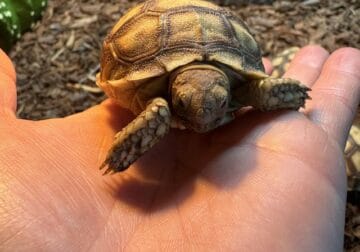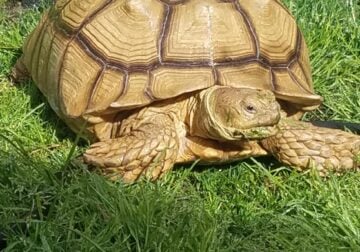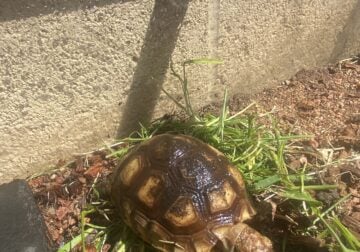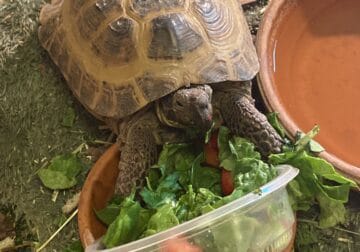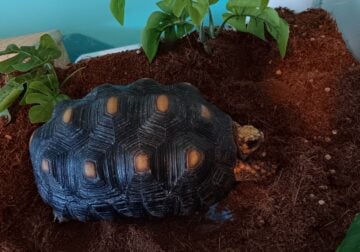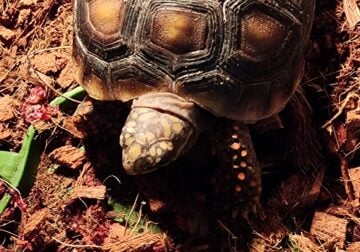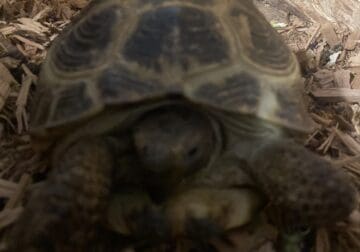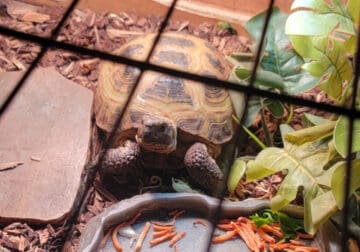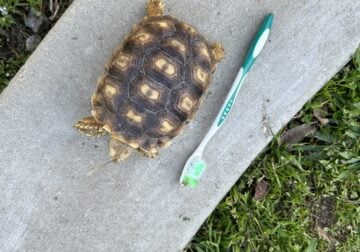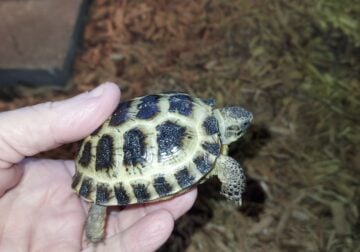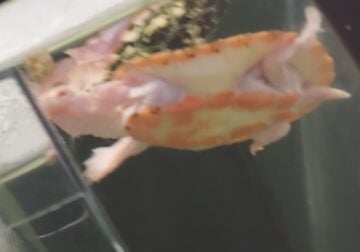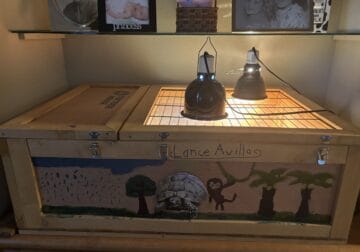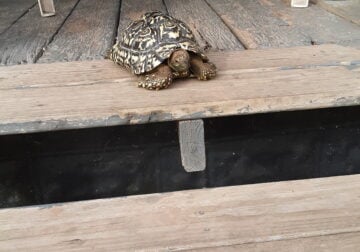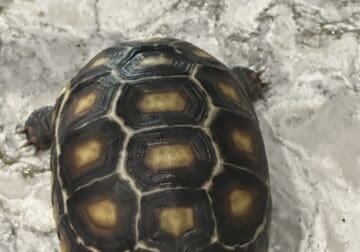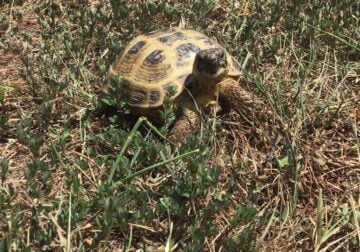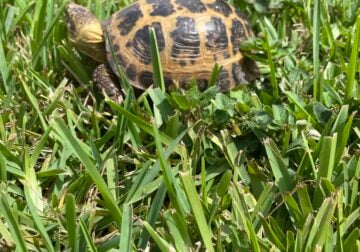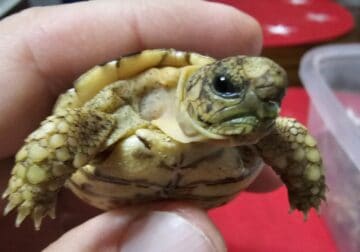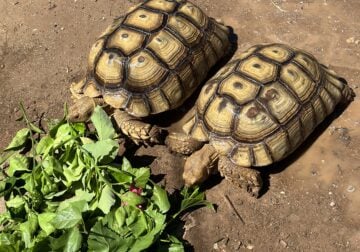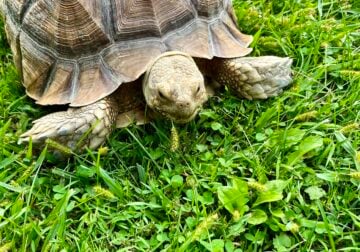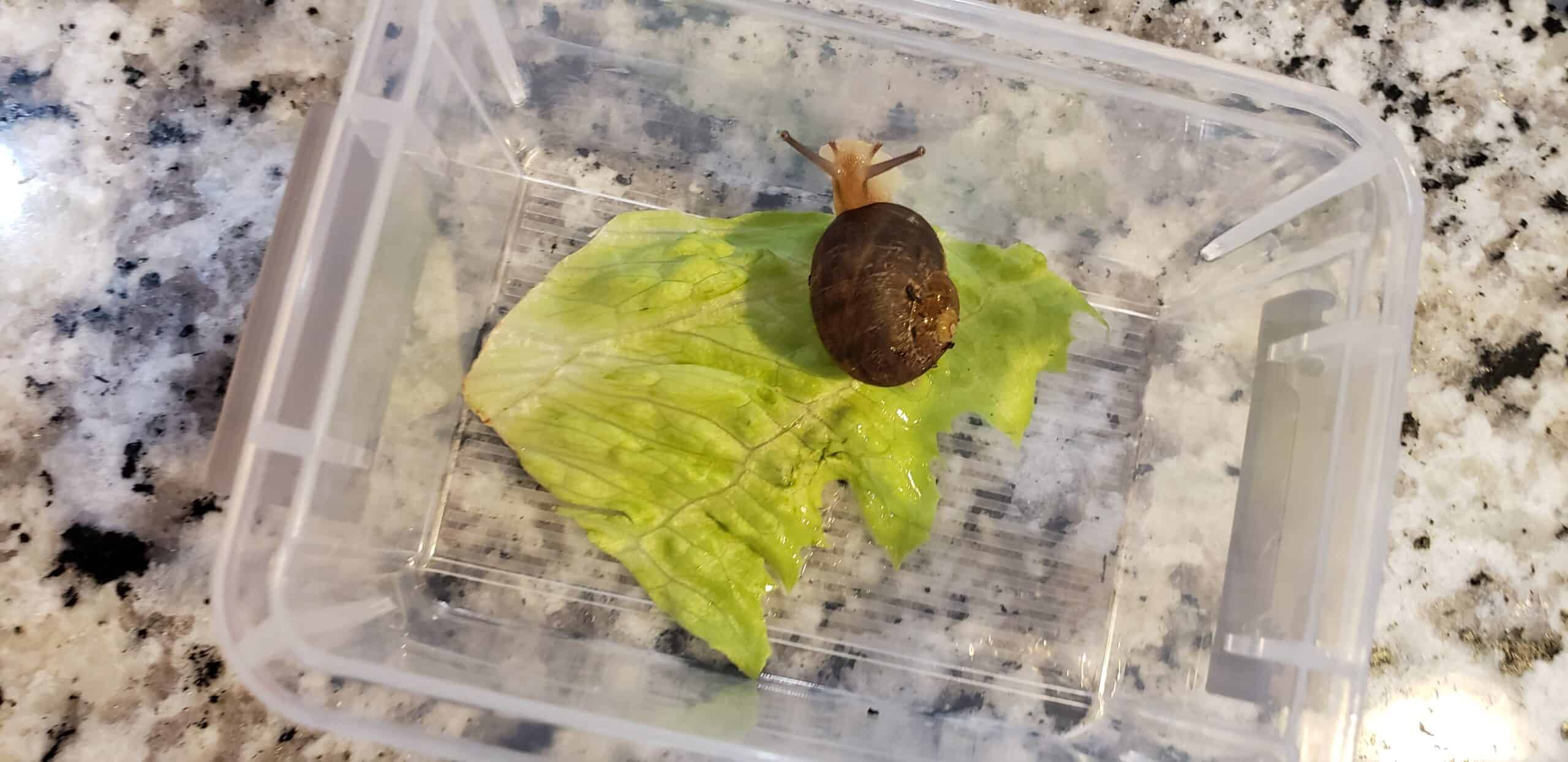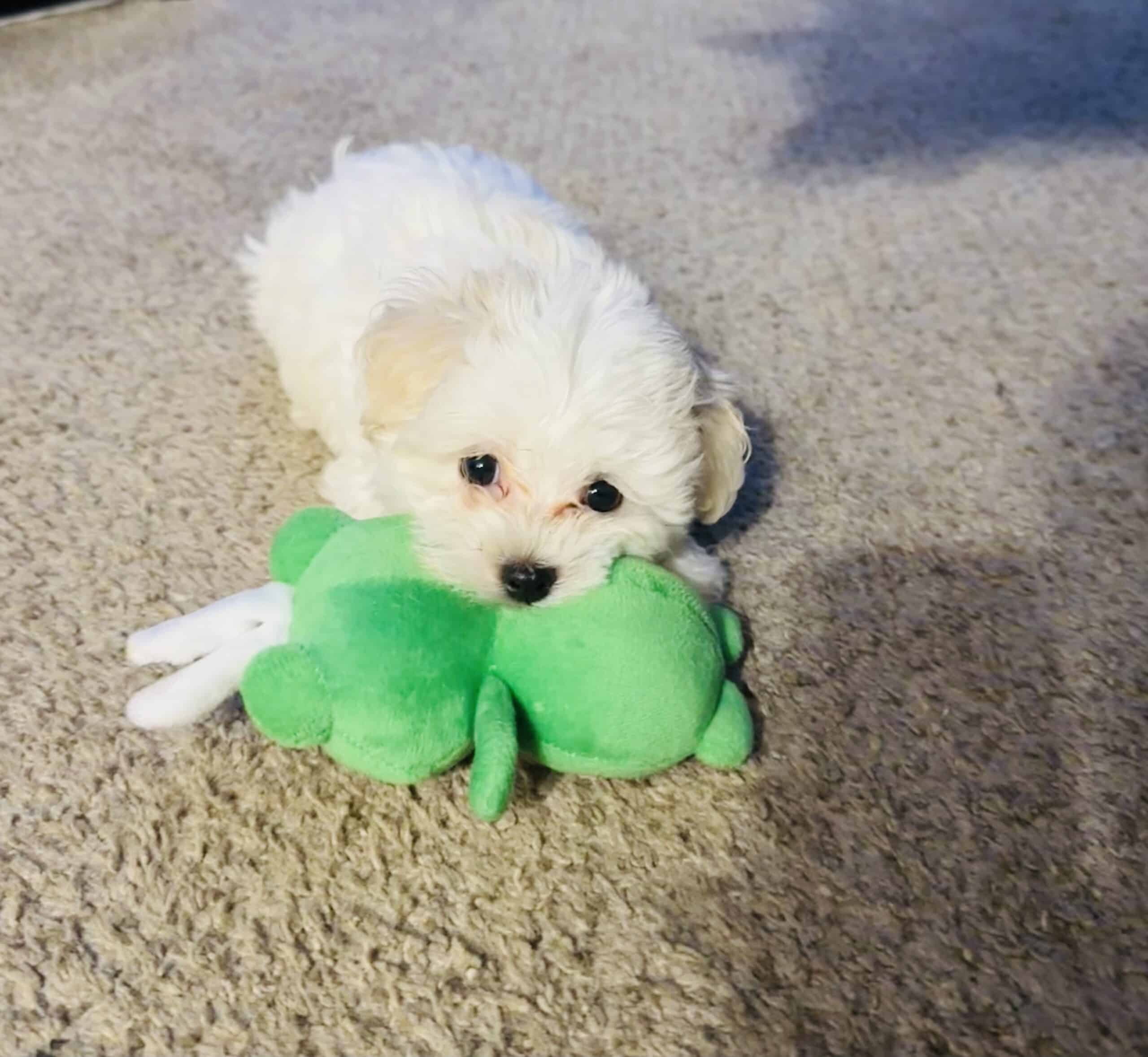Analysis of Different Tortoises for Sale Plus Proper Husbandry
If you are looking for a low-maintenance reptile to care for or you are a beginner to exotics, a tortoise could be a pet to consider. The reason a tortoise for sale can be a great option for a burgeoning reptile keeper is the environment is relatively easy to manage. If you can get their diets right, most tortoises prove hardy, happy, and long-lived.
Difference between Pet Tortoise for Sale and Turtle
Turtle is a term that describes any reptile with a shell. While all tortoises are turtles, the reverse is not true. The differences between a tortoise and a turtle stem from the latter’s adaptation to aquatic life. Tortoises have dome-shaped shells and lack flippers. They are flat-footed, and their hind legs are columnar, often described as elephantine. A tortoise has no webbing on its feet. Box turtles were once thought to be tortoises. However, the various degrees of webbing on the subspecies’ feet have motivated scientists to reclassify them as turtles. Tortoises are completely terrestrial, and most of them are herbivores. Turtles are usually aquatic except for box turtles. Box turtles can be semi-aquatic or mostly terrestrial. Turtles are commonly omnivorous.
Tortoise for Sale Near Me
Finding a pet tortoise for sale locally allows you to evaluate its health for yourself. Healthy tortoises are alert with bright eyes and hard shells with no evidence of pitting or flaking. The scales on the legs should be intact. Make sure the nostrils and vent are clear on each tortoise and check for sunken eyes which often indicate dehydration. Most tortoises are in danger of extinction in their native areas. Always acquire your tortoise from a reputable seller who only deals in captive-bred reptiles. Basic care for most tortoises involves supplying several needs:
- Sufficient space to explore and find mental enrichment
- Hides to provide a sense of security and in some cases to supplement humidity
- Right temperature – temperature gradient to allow sleep at night (cool side), metabolism during the day (warm side), and basking
- Basking surfaces
- Decor for tortoises that like to climb – can be natural or artificial rocks and plants
- Correct relative humidity for the species – overly humid environments can cause respiratory infections; too arid conditions cause dehydration
- Substrate suitable to dig and burrow depending on the species
- Protection from predators for outdoor tortoises – screen covering for pen
- Isolation from pools of water
- Protection from direct sunlight, the wind, and flooding
- UVB lighting for indoor tortoises – 12 to 14 hours of UV exposure per day
- Basking lamps for indoor animals
- Hygrometer to measure humidity
- Thermometer and thermostat
Hatchlings require different care than adults from higher humidity levels to softer and wetter greens. Stay in close contact with a reptile veterinarian.
Select Breeds of Tortoise for Sale
The listed temperatures are all in degrees Fahrenheit.
Leopard Tortoise
- Defining characteristics: spotted pattern on the shell
- Category: large tortoise
- Size: 12 to 28 inches long
- Habitat: South Africa, Somalia, Ethiopia
- Weight: 30 to 120 pounds
- Housing: at least 10ft x 10 ft; preferably outdoors
- Temperature: cold-intolerant; basking area 95 degrees; nighttime not below 70 degrees
- Humidity: 70% to 80% at night; 60% during the day
- Diet: grazer’s diet – fresh grass, hay, leaves, flowers
- Lifespan: 80 to 100 years
- Companionship: usually not aggressive; can keep as pairs or in small groups
Russian Tortoise (Four-Footed Tortoise)
- Category: small tortoise
- Defining characteristics: 4 toes on forefeet instead of the normal 5; the body is brownish-yellow; the shell is greenish-brown or black with the scutes circumscribed by yellow
- Size: 5 to 10 inches long
- Habitat: Asia
- Weight: 0.5 to 2.5 pounds
- Housing: minimum 2ft wide x 4 ft long x 1 ft high; outdoors or indoors; needs hiding places and areas to dig; 4ft x 4 ft ideal for single tortoise, 8ft x 4 ft suitable for two or three tortoises; provide appropriate hibernation burrows or a hibernaculum (for indoor hibernation)
- Temperature: may hibernate when cold; 70 to 100 degrees; indoor gradient: 95 to 100 degrees at one end, 70 degrees at other
- Humidity: below 60%
- Diet: green leafy vegetables (e.g., kale, spinach, dandelion greens), grass, fruits sparingly (e.g., apples, berries), broccoli, squash, nontoxic flowers; less than 25% tortoise pellets
- Supplements: calcium powder every other day (daily for juveniles), multivitamin powder weekly
- Hydration: weekly warm water soaks
- Companionship: best solitary; can sometimes keep 2 or 3 females together; can keep male and female together, best only during breeding periods; males usually fight each other; provide plenty of varied terrain and hiding spots for multiple tortoises
Red-Footed Tortoise
- Category: medium tortoise
- Defining characteristics: dark body and shell with pale spots in the middle of the scutes on the latter and yellow to red marking on the limbs and sometimes the head
- Personality: docile, may unintentionally bite, usually easygoing, does not like a lot of handling
- Size: 10 to 16 inches long
- Habitat: forests in South America and Central America
- Weight: 20 to 30 pounds
- Housing: better outdoors; minimum 4 ft x 8 ft, 16 inches high with a few inches of buried fencing; muddy wallow or shallow water pan set into the ground; shade with a doghouse or dense foliage plants
- Temperature: do not tolerate the cold and do not hibernate although they can enter a slowing down period during colder months; daytime 85 to 90 degrees with a basking area of 95 degrees; do not allow indoor enclosure temperatures to drop below 80 degrees; if outdoor temperature drop below 70 degrees, you need to implement a heat source in your tortoise’s outdoor shelter (if not applicable, bring your tortoise indoors)
- Humidity: 50% to 70%
- Diet: one of the rare omnivorous tortoises; 60% green leafy veggies (e.g., dandelion and mustard greens) and grass, 15% fruits (melons, figs), 15% other types of vegetables than leafy greens (e.g., carrots and sweet potatoes), and 10% tortoise pellets (can substitute with animal proteins, talk with your vet); avoid a lot of spinach
- Supplements: calcium three times weekly
- Hydration: water pan indoors, sprinkler or mister outside; dig box of moist dirt or sphagnum moss
- Companionship: can keep pairs or colonies together, expand the space accordingly; if you keep two, same-sex pairings are best
Sulcata Tortoise (African Spurred Tortoise)
- Category: giant tortoise
- Defining characteristics: a brownish-yellow shell that is flattened on the top and has abruptly-descending sides; yellowish skin; a few spurs on the thighs
- Personality: docile, social with owners, become bonded, good with children, curious, outgoing; despite their charisma, these tortoises do not like to be handled much (i.e., picked up and held)
- Size: 24 to 36 inches long
- Habitat: Northern Africa
- Weight: 70 to 100+ pounds
- Housing: better outdoors; minimum 100 ft x 100 ft, 2 ft high, 1 ft deep; logs and rocks to climb; hides, including a humid one; provide shallow pan with water for wading and drinking; make sure soil is suitable for digging burrows
- Temperature: daytime 80 to 95 degrees, nighttime 70 degrees, basking 100 degrees; provide indoor gradient
- Humidity: 40% to 60%
- Diet: high-roughage hays and grasses; limited tortoise pellets; fruits and vegetables as occasional treats
- Supplements: calcium with vitamin D3, multivitamin, and mineral powder on all feedings
- Hydration: soak in shallow water two or three times weekly
- Companionship: solitary; highly aggressive to other tortoises
- Lifespan: 70 to 100+ years
Indian Star Tortoise
- Category: small tortoise
- Defining characteristics: a star-patterned carapace
- Personality: shy, get detrimentally stressed with frequent handling
- Size: 7 to 12 inches long
- Habitat: Pakistan, Sri Lanka, and India
- Weight: 10 to 15 pounds
- Housing: 55-gallon tank; better outdoors in 6 ft x 6 ft enclosure high enough that your tortoise cannot peer over; these tortoises do not climb or burrow; needs water pan sufficient for the tortoise to submerge itself (make sure it can climb out); shade
- Temperature: daytime 90 to 95 degrees, nighttime 70 degrees, basking at least 90 degrees; provide indoor gradient
- Humidity: 40% to 75%
- Diet: grass (e.g., fescue, rye, Bermuda) and hay (e.g., Timothy, alfalfa)
- Supplements: calcium dust daily
- Hydration: humid hide box (humidity should reach 80%); graduated water pan; peat moss or other substrates that increase humidity in the enclosure
- Companionship: can house together
- Lifespan: 30 to 55 years, occasionally as long as 80 years
Greek Tortoise (Spur-Thighed Tortoise)
- Category: giant tortoise
- Defining characteristics: the shell has a high dome; a thick bridge between the upper (carapace) and lower (plastron) parts of the shell; the tortoise is yellowish to gold to dark brown; the shell has a variable mosaic pattern
- Personality: laidback; familiarity will make them more social; do not like to be handled
- Size: 10 to 16 inches long
- Habitat: Northern Africa
- Weight: 20 to 30 pounds
- Housing: better outdoors; minimum 3 ft x 6 ft, 1.5 ft high, 6 inches deep; shade and baking areas
- Temperature: daytime 75 to 90 degrees, nighttime 70 to 80 degrees, basking 95 to 100 degrees; this tortoise can handle outdoor temperatures at night of 65 degrees; may hibernate during the winter if too cold
- Humidity: 40% to 60%
- Diet: dark, leafy greens (e.g., endive, collard greens, fresh parsley), vegetables (e.g., zucchini), hay, and less than 10% fruits (e.g., apples, berries)
- Supplements: tortoise pellets, calcium
- Hydration: mist daily
- Companionship: solitary best; can occasionally be kept in pairs
- Lifespan: 50+ years
Desert Tortoise
- Category: medium tortoise
- Defining characteristics: a gray, brown, or black shell with yellowish accents and a high domed top
- Personality: can become bonded, usually lively and responsive; some like people more than others and show attention-seeking behaviors
- Size: 8 to 15 inches long
- Habitat: Southern Nevada, Eastern California, Sonoran Desert of Mexico, Arizona, and Southwestern Utah
- Weight: 8 to 15 pounds
- Housing: better outdoors; minimum 6 ft x 6 ft, 2 ft high, 1 ft deep; ideally dimensions six times the length of the tortoise; dry hides; shade; you can build a short tunnel or burrow; provide a dog house in areas where the soil is too humid for your tortoise to inhabit a burrow; a shallow water pan for occasional wading
- Temperature: daytime 70 to 90 degrees, nighttime 60 to 65 degrees if cold indoors, basking 95 degrees; provide indoor gradient; desert tortoises can handle outdoor nighttime temperatures of 40 degrees, especially if they have a burrow; you can hibernate your tortoise in the winter (talk to experts about the specific protocols, but the temperature must be kept below 60 degrees)
- Humidity: 40% to 50% during hibernation
- Diet: 85% high-roughage hays, weeds, grasses, and dark greens (Bermuda, dandelion, prickly pear, flowers); some leafy greens (e.g., collard and dandelion greens, endive, watercress) which should comprise 50% or less of the overall feeding portions; less than 15% hard vegetables (e.g., squash, green beans, bell peppers); spinach, kale, chard, and other similar veggies should only be fed as treats because of their nutritional composition; fruits like apples, apricots, mangoes, and oranges can serve as occasional treats
- Supplements: calcium with vitamin D3, multivitamin, and mineral powder on all feedings
- Hydration: soak in shallow water two or three times weekly
- Companionship: solitary by nature; occasionally females can be paired or grouped
- Lifespan: 30 to 60 years
Famous Tortoise breeds Not for Sale
Endangered Tortoises – Giant Galapagos Tortoise & Wild Desert Tortoise
Galapagos Tortoise
Some tortoises are categorized as giants because they grow to enormous sizes. One popular example is the Sulcata Tortoise which is legal to own. The Galapagos Tortoise is critically endangered and may not be harvested in any form (meat, eggs, pets, or hatchlings) from the wild. Although you can acquire a captive-bred Galapagos tortoise, you must research the laws that apply to both owning one and legal ownership transfers. Laws may also regulate the transport of such specimens across state lines.
Desert Tortoise
While the Galapagos tortoise is federally protected the Desert Tortoise also falls under the rule of state laws. Specifically, these states are Arizona, California, Nevada, and Utah. Although most states do not yet have clauses that address habitat destruction, the export, import, and release into the wild of these tortoises are prohibited activities. The states generally aim to allow tortoises that are already pets to remain captive. Regulations require proof of the acquisition of a Desert Tortoise before 1988 or earlier depending on the state. States also have rules that apply to the possession of offspring of captive tortoises and their disposition through gifting or sales. Keep in mind that the commercialization of endangered reptiles is prohibited, and states may even limit how many animals you can own. It is commonly only one. States frequently ban the purposeful breeding of desert tortoises. Stay alert because states that permit breeding now (i.e., Arizona) are posed to prohibit it in the near future as captive desert tortoises are overpopulated.
